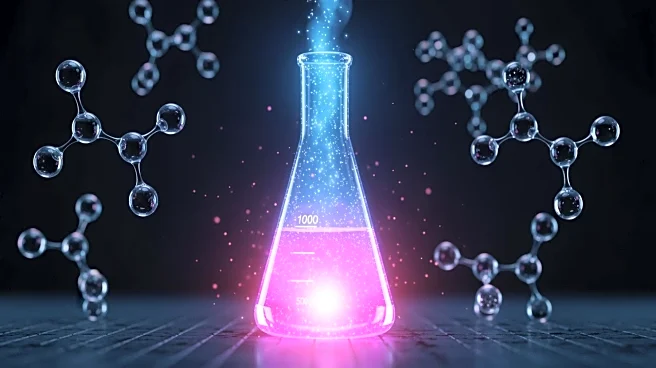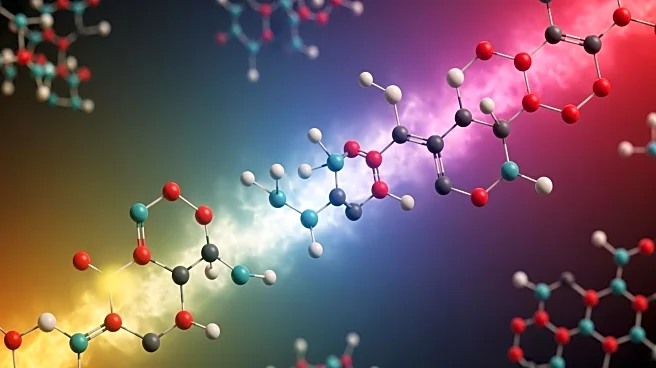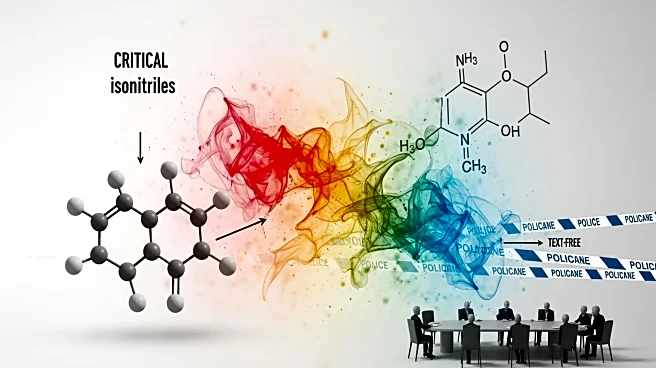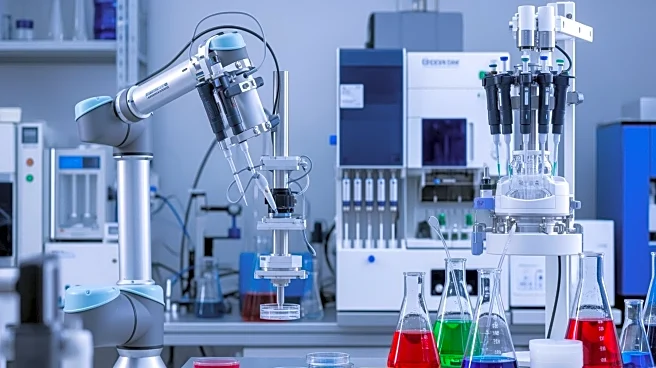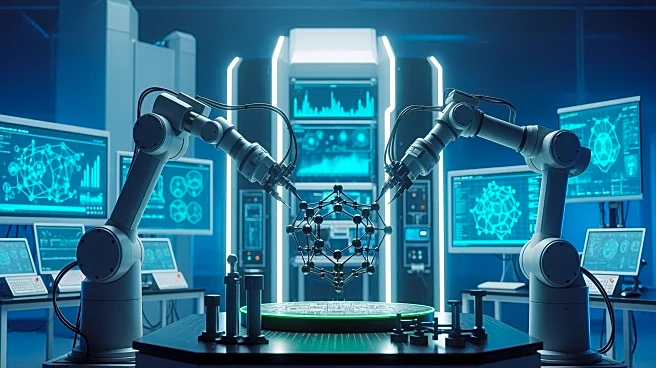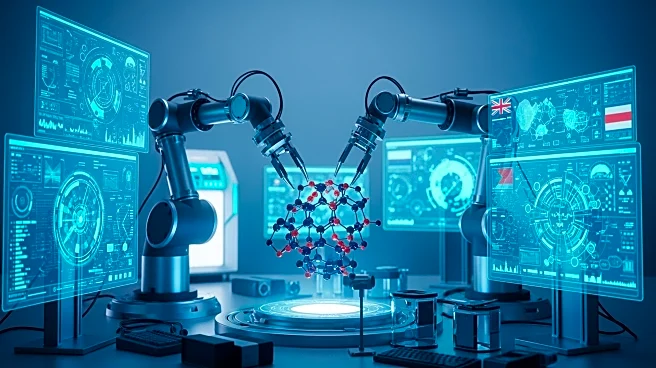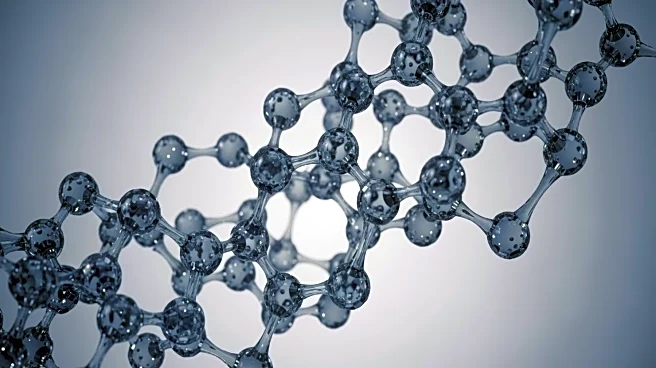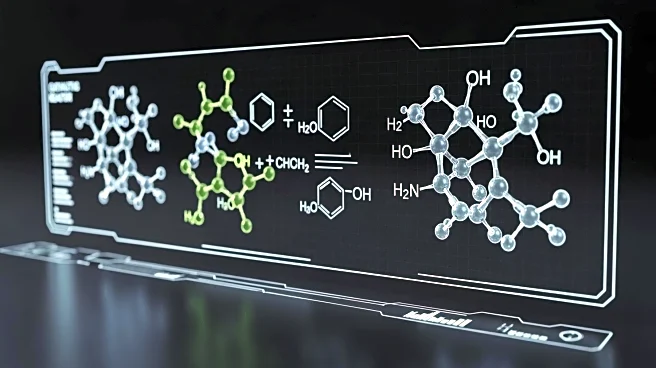What's Happening?
A research team has successfully developed a novel method for the photochemical rearrangement of isonitriles using energy transfer catalysis. This process involves the di-π-ethane and di-π-propane rearrangements
of isonitrile functional groups under visible light conditions. The study highlights the use of thioxanthone as a photocatalyst, achieving high yields of three- and five-membered cyclic architectures. The research demonstrates a broad substrate scope and functional group tolerance, indicating the potential for diverse applications in organic synthesis. The findings are supported by computational studies that confirm the proposed mechanism of the rearrangement process.
Why It's Important?
This development is significant for the field of organic chemistry, particularly in the synthesis of complex molecular structures. The ability to efficiently rearrange isonitrile functional groups expands the toolkit available for chemists, potentially leading to new methods for creating pharmaceuticals, agrochemicals, and materials. The use of visible light and Earth-abundant catalysts aligns with sustainable chemistry practices, reducing the environmental impact of chemical synthesis. This advancement could lead to more cost-effective and environmentally friendly production processes in various industries.
What's Next?
The research team plans to further explore the applications of these photochemical rearrangements in the synthesis of complex natural products and pharmaceuticals. There is potential for collaboration with industry partners to scale up the process for commercial applications. Additionally, further studies may focus on optimizing the reaction conditions and exploring other functional group rearrangements. The findings could inspire new research into energy transfer catalysis and its applications in other areas of chemistry.
Beyond the Headlines
The study highlights the importance of interdisciplinary collaboration, combining experimental chemistry with computational modeling to validate the proposed mechanisms. This approach could set a precedent for future research in the field, emphasizing the role of computational chemistry in understanding and optimizing complex reactions. The development also raises questions about the potential for synthetic Darwinian evolution in catalyst optimization, suggesting a new direction for research in catalyst design.
